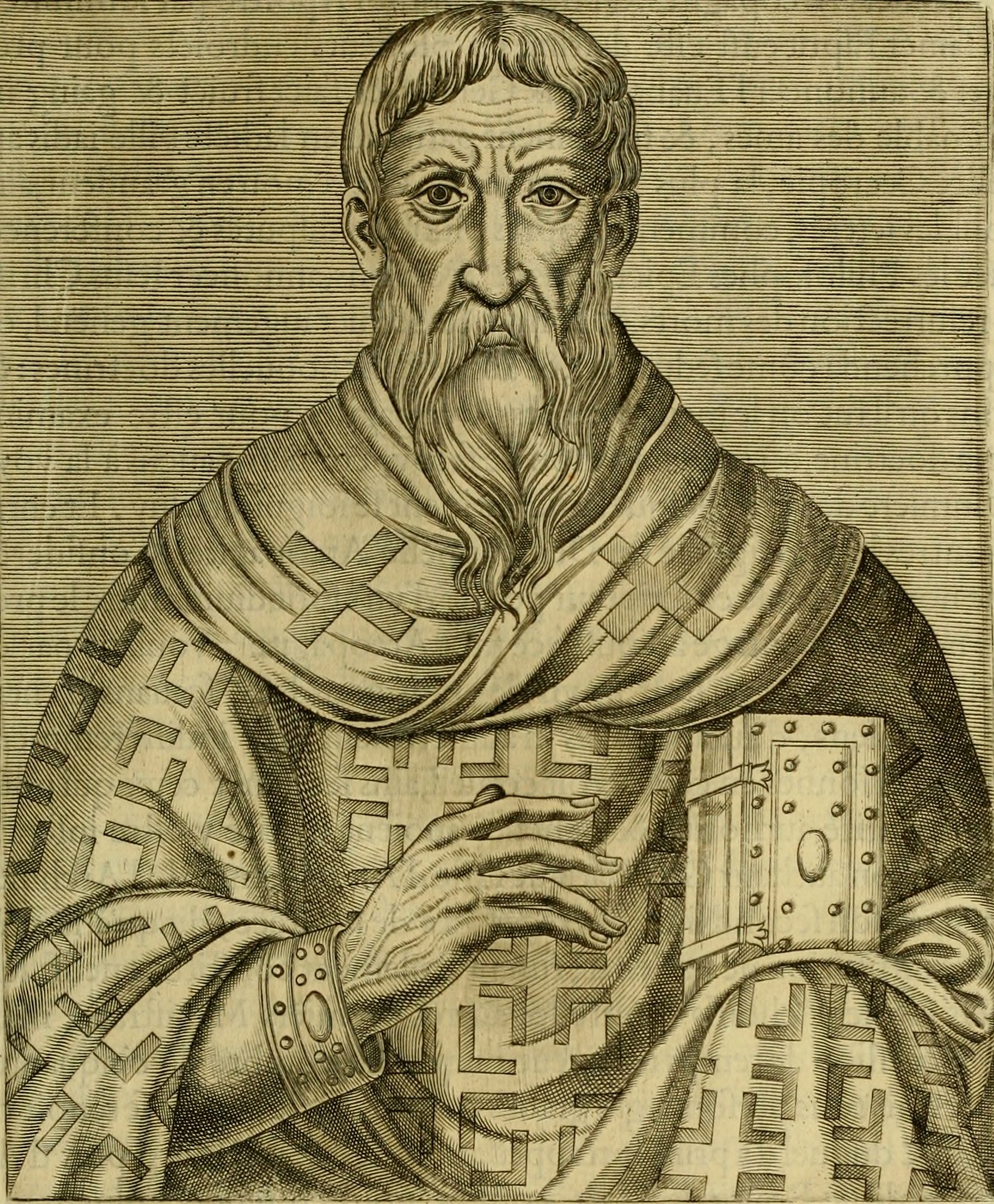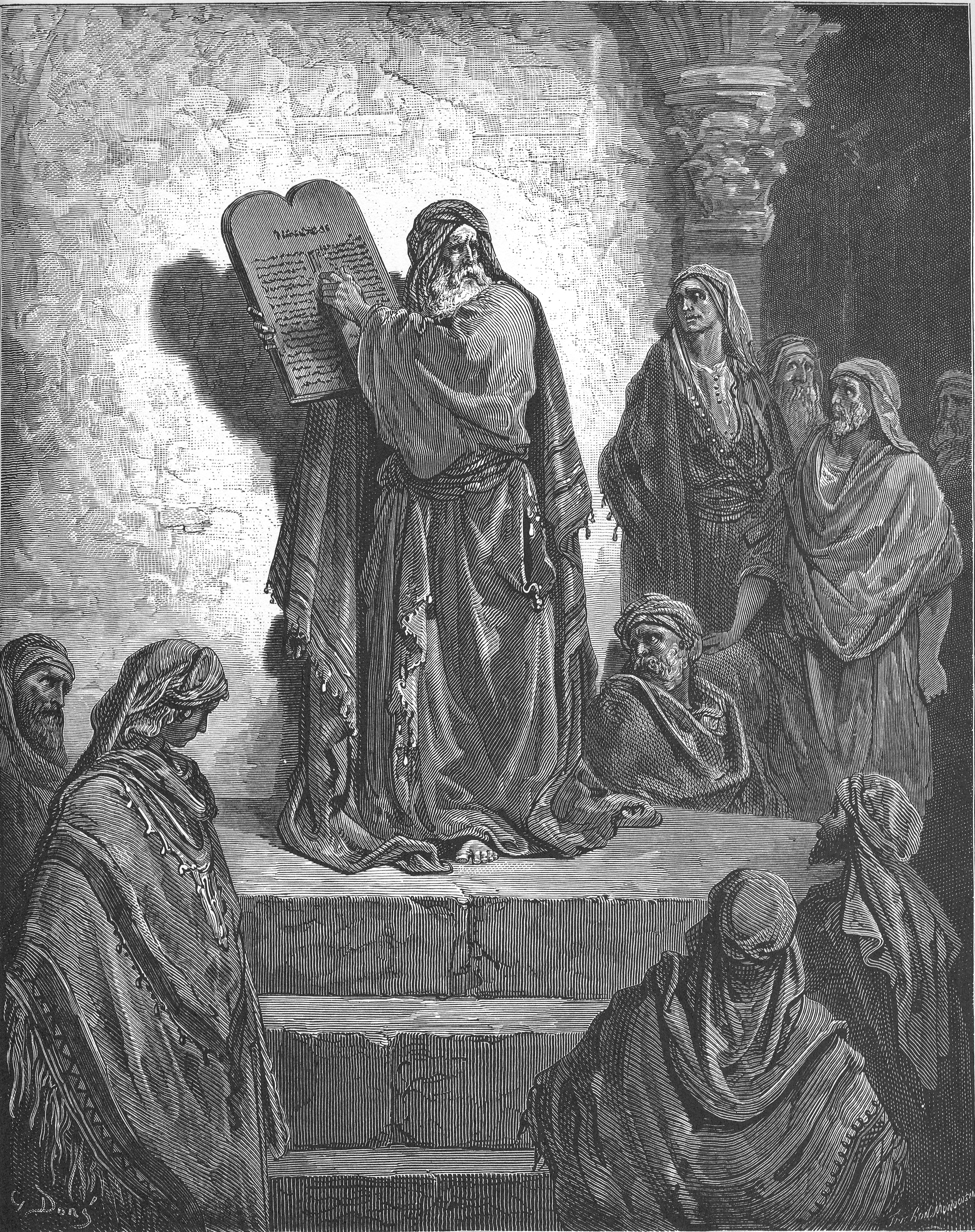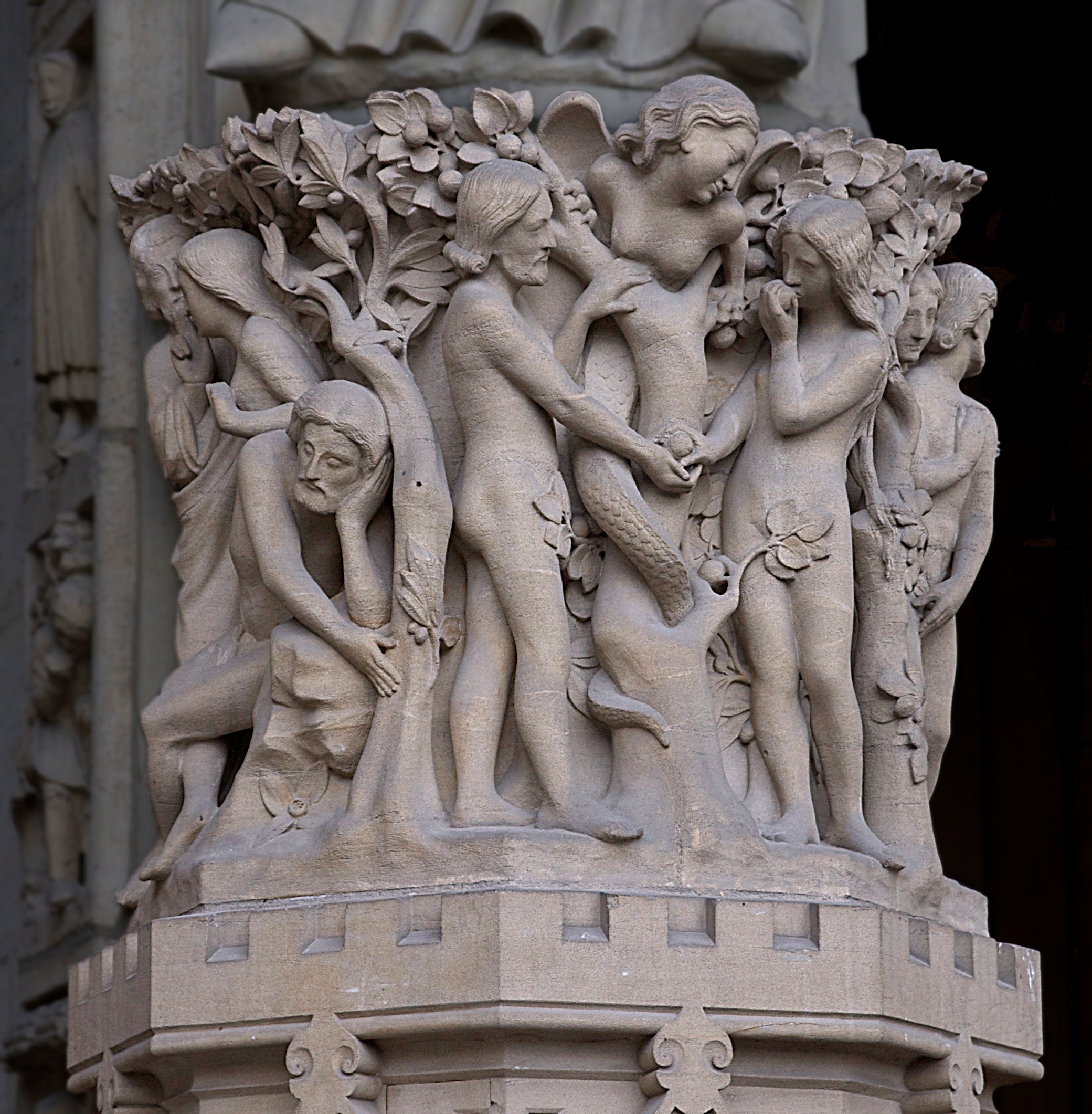|
Greek Apocalypse Of Ezra
The Greek Apocalypse of Ezra, also known as The Word and Revelation of Esdras, is a pseudepigraphal work written in the name of the biblical scribe Ezra. It survived in only two Greek copies and is dated between the 2nd century and the 9th century AD. According to R. H. Charles, the text of the ''Greek Apocalypse of Ezra'' was influenced by the book of ''2 Esdras''. The extant version of the ''Greek Apocalypse'' is thought to have undergone extensive reworking, if not having been totally written by, Christian editors, mentioning the Apostles Paul and John, King Herod, etc. Like much apocalyptic literature, the Apocalypse of Ezra portrays its author as being granted visions of Heaven and of the Gehenna The Valley of Hinnom ( he, , lit=Valley of the son of Hinnom, translit=Gēʾ ḇen-Hīnnōm) is a historic valley surrounding Ancient Jerusalem, Ancient Jerusalem from the west and southwest. The valley is also known by the name Gehinnom ( ... of fire, where the punishment ... [...More Info...] [...Related Items...] OR: [Wikipedia] [Google] [Baidu] |
Pseudepigrapha
Pseudepigrapha (also anglicized as "pseudepigraph" or "pseudepigraphs") are falsely attributed works, texts whose claimed author is not the true author, or a work whose real author attributed it to a figure of the past.Bauckham, Richard; "Pseudo-Apostolic Letters", ''Journal of Biblical Literature'', Vo. 107, No. 3, September 1988, pp. 469–94. In biblical studies, the term ''pseudepigrapha'' can refer to an assorted collection of Jewish religious works thought to be written 300 BCE to 300 CE. They are distinguished by Protestants from the deuterocanonical books (Catholic and Orthodox) or Apocrypha (Protestant), the books that appear in extant copies of the Septuagint in the fourth century or later and the Vulgate, but not in the Hebrew Bible or in Protestant Bibles. The Catholic Church distinguishes only between the deuterocanonical and all other books; the latter are called biblical apocrypha, which in Catholic usage includes the pseudepigrapha. In addition, two books co ... [...More Info...] [...Related Items...] OR: [Wikipedia] [Google] [Baidu] |
Ezra
Ezra (; he, עֶזְרָא, '; fl. 480–440 BCE), also called Ezra the Scribe (, ') and Ezra the Priest in the Book of Ezra, was a Jewish scribe ('' sofer'') and priest ('' kohen''). In Greco-Latin Ezra is called Esdras ( grc-gre, Ἔσδρας). According to the Hebrew Bible he was a descendant of Sraya, the last High Priest to serve in the First Temple, and a close relative of Joshua, the first High Priest of the Second Temple. He returned from Babylonian exile and reintroduced the Torah in Jerusalem. According to 1 Esdras, a Greek translation of the Book of Ezra still in use in Eastern Orthodoxy, he was also a High Priest. Rabbinic tradition holds that he was an ordinary member of the priesthood. Several traditions have developed over his place of burial. One tradition says that he is buried in al-Uzayr near Basra (Iraq), while another tradition alleges that he is buried in Tadif near Aleppo, in northern Syria. His name may be an abbreviation of ', "Yah helps". In ... [...More Info...] [...Related Items...] OR: [Wikipedia] [Google] [Baidu] |
2 Esdras
2 Esdras (also called 4 Esdras, Latin Esdras, or Latin Ezra) is an apocalyptic book in some English versions of the Bible. Tradition ascribes it to Ezra, a scribe and priest of the , but scholarship places its composition between 70 and . It is reckoned among the apocrypha by Roman Catholics, Protestants, and most Eastern Orthodox Christians. 2 Esdras was excluded by Jerome from his Vulgate version of the Old Testament, but from the 9th century onwards, the Latin text is sporadically found as an appendix to the Vulgate, inclusion becoming more general after the 13th century. Naming conventions As with 1 Esdras, some confusion exists about the numbering of this book. The Vulgate of Jerome includes only a single book of Ezra, but in the Clementine Vulgate 1, 2, 3 and 4 Esdras are separate books. Protestant writers, after the Geneva Bible, called 1 and 2 Esdras of the Vulgate, Ezra and Nehemiah; and called 3 and 4 Esdras of the Vulgate, 1 Esdras and 2 Esdras respectively. Thes ... [...More Info...] [...Related Items...] OR: [Wikipedia] [Google] [Baidu] |
Apocalyptic Literature
Apocalyptic literature is a genre of prophetical writing that developed in post-Exilic Jewish culture and was popular among millennialist early Christians. ''Apocalypse'' ( grc, , }) is a Greek word meaning " revelation", "an unveiling or unfolding of things not previously known and which could not be known apart from the unveiling". As a genre, apocalyptic literature details the authors' visions of the end times/end of the age as revealed by an angel or other heavenly messenger. The apocalyptic literature of Judaism and Christianity embraces a considerable period, from the centuries following the Babylonian exile down to the close of the Middle Ages. Origins Apocalyptic elements can be detected in the prophetic books of Joel and Zechariah, while Isaiah chapters 24–27 and 33 present well-developed apocalypses. The second half of the Book of Daniel (chs. 7-12) offers a fully matured and classic example of this genre of literature. Unfulfilled prophecy The non-fulfill ... [...More Info...] [...Related Items...] OR: [Wikipedia] [Google] [Baidu] |
Heaven
Heaven or the heavens, is a common religious cosmological or transcendent supernatural place where beings such as deities, angels, souls, saints, or venerated ancestors are said to originate, be enthroned, or reside. According to the beliefs of some religions, heavenly beings can descend to Earth or incarnate and earthly beings can ascend to Heaven in the afterlife or, in exceptional cases, enter Heaven alive. Heaven is often described as a "highest place", the holiest place, a Paradise, in contrast to hell or the Underworld or the "low places" and universally or conditionally accessible by earthly beings according to various standards of divinity, goodness, piety, faith, or other virtues or right beliefs or simply divine will. Some believe in the possibility of a heaven on Earth in a '' world to come''. Another belief is in an axis mundi or world tree which connects the heavens, the terrestrial world, and the underworld. In Indian religions, heaven is cons ... [...More Info...] [...Related Items...] OR: [Wikipedia] [Google] [Baidu] |
Gehenna
The Valley of Hinnom ( he, , lit=Valley of the son of Hinnom, translit=Gēʾ ḇen-Hīnnōm) is a historic valley surrounding Ancient Jerusalem from the west and southwest. The valley is also known by the name Gehinnom ( ''Gēʾ-Hīnnōm'', lit. 'Valley of Hinnom') an alternative Biblical Hebrew form which survived into Aramaic and has received various fundamental theological connotations, and by the Greek and Syriac transliteration Gehenna (Γέεννα ''Géenna''/ܓܼܼܗܲܢܵܐ ''Gihanna''). The Valley of Hinnom is first mentioned in the Hebrew Bible as part of the border between the tribes of Judah and Benjamin ( Joshua 15:8). During the late First Temple period, it was the site of the Tophet, where some of the kings of Judah had sacrificed their children by fire ( Jeremiah 7:31). Thereafter, it was cursed by the biblical prophet Jeremiah ( Jeremiah 19:2– 6). In later Jewish rabbinic literature, Gehinnom became associated with divine punishment in Jewish ... [...More Info...] [...Related Items...] OR: [Wikipedia] [Google] [Baidu] |
Theodicy
Theodicy () means vindication of God. It is to answer the question of why a good God permits the manifestation of evil, thus resolving the issue of the problem of evil. Some theodicies also address the problem of evil "to make the existence of an omniscience, all-knowing, omnipotence, all-powerful and omnibenevolence, all-good or omnibenevolent God consistent with the existence of evil or suffering in the world". Unlike a defense, which tries to demonstrate that the existence of God, God's existence is logically possible in the light of evil, a theodicy provides a framework wherein God's existence is also plausible. The German philosopher and mathematician Gottfried Leibniz coined the term "theodicy" in 1710 in his work , though various responses to the problem of evil had been previously proposed. The British philosopher John Hick traced the history of moral theodicy in his 1966 work, ''Evil and the God of Love'', identifying three major traditions: # the Plotinian theodicy, na ... [...More Info...] [...Related Items...] OR: [Wikipedia] [Google] [Baidu] |
Free Will
Free will is the capacity of agents to choose between different possible courses of action unimpeded. Free will is closely linked to the concepts of moral responsibility, praise, culpability, sin, and other judgements which apply only to actions that are freely chosen. It is also connected with the concepts of advice, persuasion, deliberation, and prohibition. Traditionally, only actions that are freely willed are seen as deserving credit or blame. Whether free will exists, what it is and the implications of whether it exists or not are some of the longest running debates of philosophy and religion. Some conceive of free will as the right to act outside of external influences or wishes. Some conceive free will to be the capacity to make choices undetermined by past events. Determinism suggests that only one course of events is possible, which is inconsistent with a libertarian model of free will. Ancient Greek philosophy identified this issue, which remains a major fo ... [...More Info...] [...Related Items...] OR: [Wikipedia] [Google] [Baidu] |
Fall Of Man
The fall of man, the fall of Adam, or simply the Fall, is a term used in Christianity to describe the transition of the first man and woman from a state of innocent obedience to God to a state of guilty disobedience. * * * * The doctrine of the Fall comes from a biblical interpretation of Genesis, chapters 1–3. At first, Adam and Eve lived with God in the Garden of Eden, but the serpent tempted them into eating the fruit from the tree of knowledge of good and evil, which God had forbidden. After doing so, they became ashamed of their nakedness and God expelled them from the Garden to prevent them from eating from the tree of life and becoming immortal. In mainstream (Nicene) Christianity, the doctrine of the Fall is closely related to that of original sin or ancestral sin. They believe that the Fall brought sin into the world, corrupting the entire natural world, including human nature, causing all humans to be born into original sin, a state from which they cannot atta ... [...More Info...] [...Related Items...] OR: [Wikipedia] [Google] [Baidu] |
Adam And Eve
Adam and Eve, according to the creation myth of the Abrahamic religions, were the first man and woman. They are central to the belief that humanity is in essence a single family, with everyone descended from a single pair of original ancestors. They also provide the basis for the doctrines of the fall of man and original sin that are important beliefs in Christianity, although not held in Judaism or Islam. In the Book of Genesis of the Hebrew Bible, chapters one through five, there are two creation narratives with two distinct perspectives. In the first, Adam and Eve are not named. Instead, God created humankind in God's image and instructed them to multiply and to be stewards over everything else that God had made. In the second narrative, God fashions Adam from dust and places him in the Garden of Eden. Adam is told that he can eat freely of all the trees in the garden, except for a tree of the knowledge of good and evil. Subsequently, Eve is created from one of Ada ... [...More Info...] [...Related Items...] OR: [Wikipedia] [Google] [Baidu] |
Intercession
Intercession or intercessory prayer is the act of praying to a deity on behalf of others, or asking a saint in heaven to pray on behalf of oneself or for others. The Apostle Paul's exhortation to Timothy specified that intercession prayers should be made for all people. Christianity In the early Church The early Christians continued to practice intercessory prayer on behalf of others after Jesus' death. Ignatius of Antioch was one man who exhorted Christians to continue to pray for others, and especially for those who became Docetists or held other heretical beliefs. In his letter to the churches of Smyrna, St. Ignatius exhorts the Christians there to pray for other people: "only you must pray to God for them, if by any means they may be brought to repentance, which, however, will be very difficult. Yet Jesus Christ, who is our true life, has the power of ffectingthis". Throughout all of Ignatius's letters, the word for prayers of intercession appears nineteen times, and I ... [...More Info...] [...Related Items...] OR: [Wikipedia] [Google] [Baidu] |
Antichrist
In Christian eschatology, the Antichrist refers to people prophesied by the Bible to oppose Jesus Christ and substitute themselves in Christ's place before the Second Coming. The term Antichrist (including one plural form)1 John ; . 2 John . is found five times in the New Testament, solely in the First and Second Epistle of John. The Antichrist is announced as the one "who denies the Father and the Son." The similar term ''pseudokhristos'' or "false Christ" is also found in the Gospels. In Matthew ( chapter 24) and Mark ( chapter 13), Jesus alerts his disciples not to be deceived by the false prophets, who will claim themselves as being Christ, performing "great signs and wonders". Three other images often associated with the singular Antichrist are the "little horn" in Daniel's final vision, the "man of sin" in Paul the Apostle's Second Epistle to the Thessalonians, and the Beast of the Sea in the Book of Revelation. Etymology ''Antichrist'' is translated from the ... [...More Info...] [...Related Items...] OR: [Wikipedia] [Google] [Baidu] |




.jpg)





